Attention 从分类到实现细节
Attention的本质可以看做加权求和。
Attention 的 N 种类型
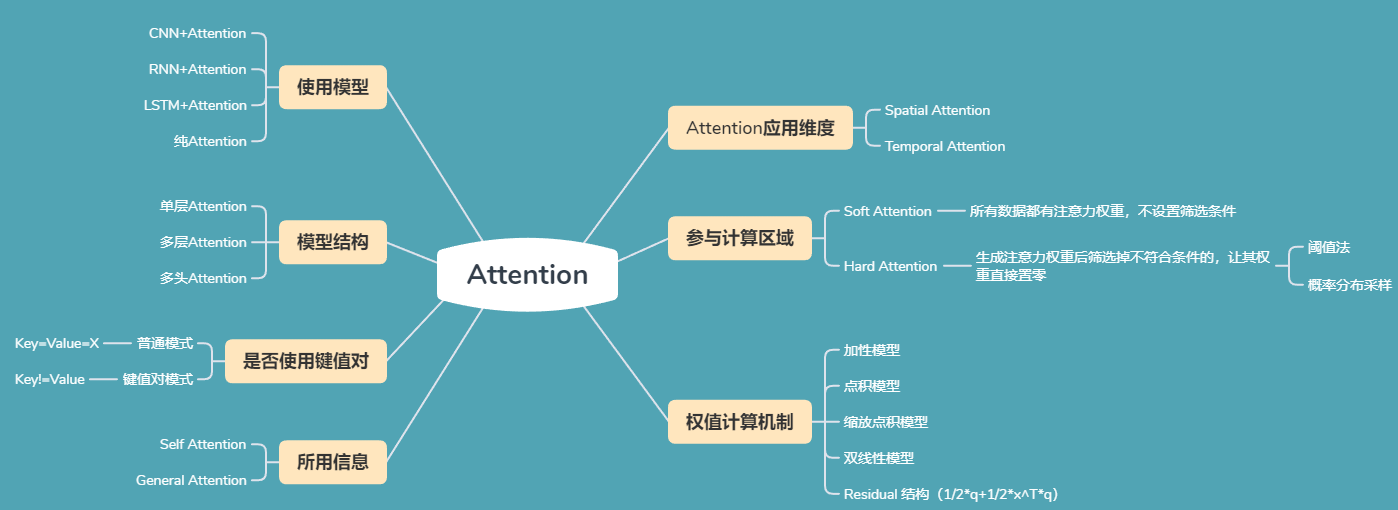
Attention 有很多种不同的类型:Soft Attention、Hard Attention、静态 Attention、动态 Attention、Self Attention 等等。上图为各种Attention的分类,下面是这些不同的 Attention 的解释。
由于这篇文章《Attention 用于 NLP 的一些小结》已经总结的很好的,下面就直接引用了:
本节从计算区域、所用信息、结构层次和模型等方面对 Attention 的形式进行归类。
1. 计算区域
根据 Attention 的计算区域,可以分成以下几种:
1)Soft Attention,这是比较常见的 Attention 方式,对所有 key 求权重概率,每个 key 都有一个对应的权重,是一种全局的计算方式(也可以叫 Global Attention)。这种方式比较理性,参考了所有 key 的内容,再进行加权。但是计算量可能会比较大一些。
2)Hard Attention,这种方式是直接精准定位到某个 key,其余 key 就都不管了,相当于这个 key 的概率是 1,其余 key 的概率全部是 0。因此这种对齐方式要求很高,要求一步到位,如果没有正确对齐,会带来很大的影响。另一方面,因为不可导,一般需要用强化学习的方法进行训练。(或者使用 gumbel softmax 之类的)
3)Local Attention,这种方式其实是以上两种方式的一个折中,对一个窗口区域进行计算。先用 Hard 方式定位到某个地方,以这个点为中心可以得到一个窗口区域,在这个小区域内用 Soft 方式来算 Attention。
2. 所用信息
假设我们要对一段原文计算 Attention,这里原文指的是我们要做 attention 的文本,那么所用信息包括内部信息和外部信息,内部信息指的是原文本身的信息,而外部信息指的是除原文以外的额外信息。
1)General Attention,这种方式利用到了外部信息,常用于需要构建两段文本关系的任务,query 一般包含了额外信息,根据外部 query 对原文进行对齐。
简单判定依据:计算Attention时,有没有用到除了被Attention向量以外的向量。
比如在阅读理解任务中,需要构建问题和文章的关联,假设现在 baseline 是,对问题计算出一个问题向量 q,把这个 q 和所有的文章词向量拼接起来,输入到 LSTM中进行建模。那么在这个模型中,文章所有词向量共享同一个问题向量,现在我们想让文章每一步的词向量都有一个不同的问题向量,也就是,在每一步使用文章在该步下的词向量对问题来算 attention,这里问题属于原文,文章词向量就属于外部信息。
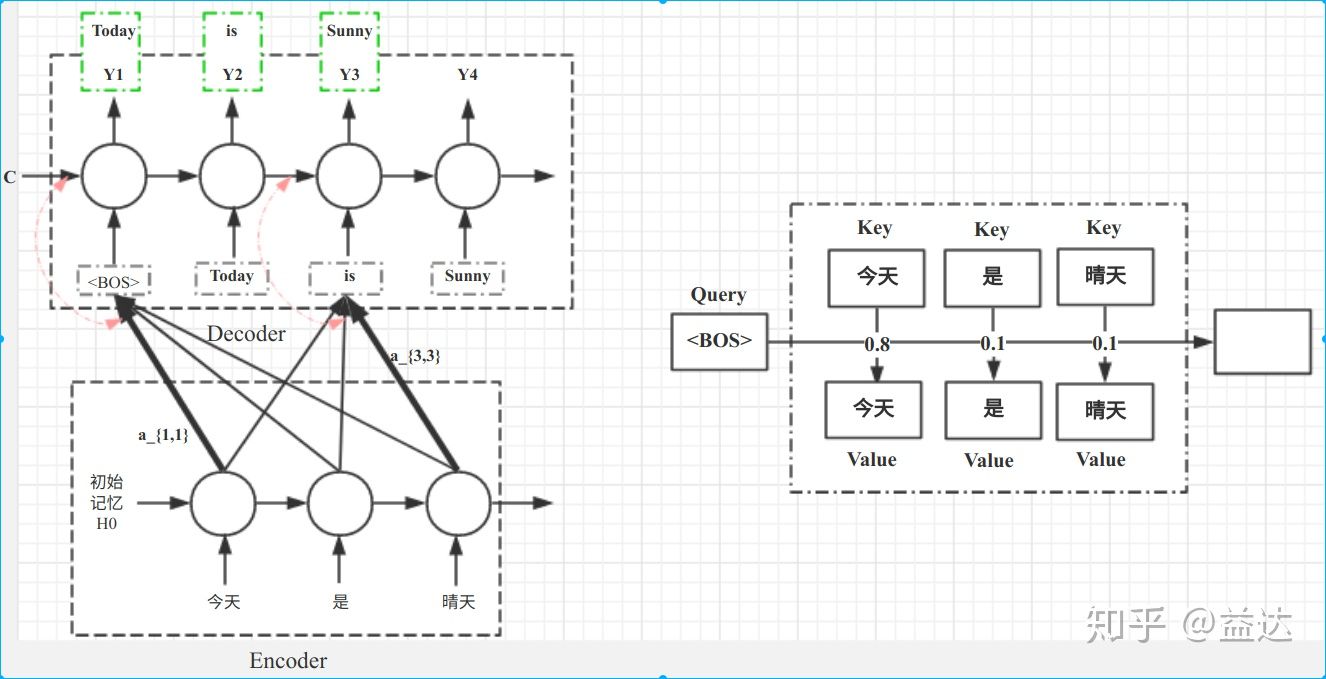
2)Self Attention,这种方式只使用内部信息,key 和 value 以及 query 只和输入原文有关,在 self attention 中,key=value=query。既然没有外部信息,那么在原文中的每个词可以跟该句子中的所有词进行 Attention 计算,相当于寻找原文内部的关系。
还是举阅读理解任务的例子,上面的 baseline 中提到,对问题计算出一个向量 q,那么这里也可以用上 attention,只用问题自身的信息去做 attention,而不引入文章信息。
同样是在Encoder-Decoder模型中,它的实现方法是Encoder部分堆叠了两层。
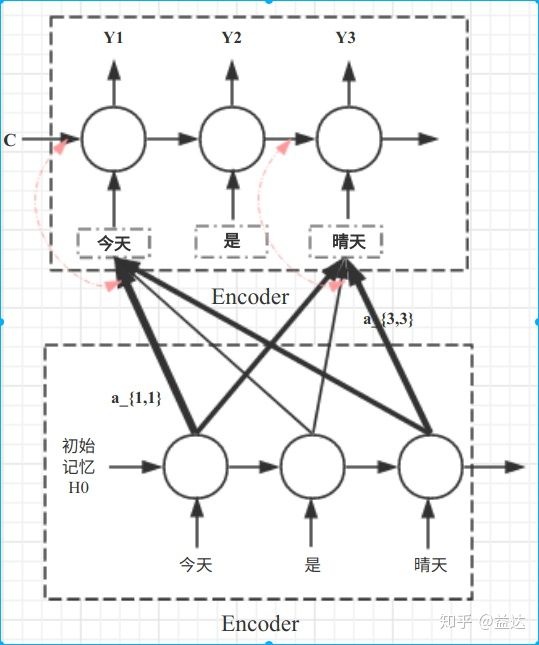
3. 结构层次
结构方面根据是否划分层次关系,分为单层 attention,多层 attention 和多头 attention:
1)单层 Attention,这是比较普遍的做法,用一个 query 对一段原文进行一次 attention。
2)多层 Attention,一般用于文本具有层次关系的模型,假设我们把一个 document 划分成多个句子,在第一层,我们分别对每个句子使用 attention 计算出一个句向量(也就是单层 attention);在第二层,我们对所有句向量再做 attention 计算出一个文档向量(也是一个单层 attention),最后再用这个文档向量去做任务。
3)多头 Attention,这是 Attention is All You Need 中提到的 multi-head attention,用到了多个 query 对一段原文进行了多次 attention,每个 query 都关注到原文的不同部分,相当于重复做多次单层 attention:$$head_i=Attention(q_i,K,V)$$
最后再把这些结果拼接起来:
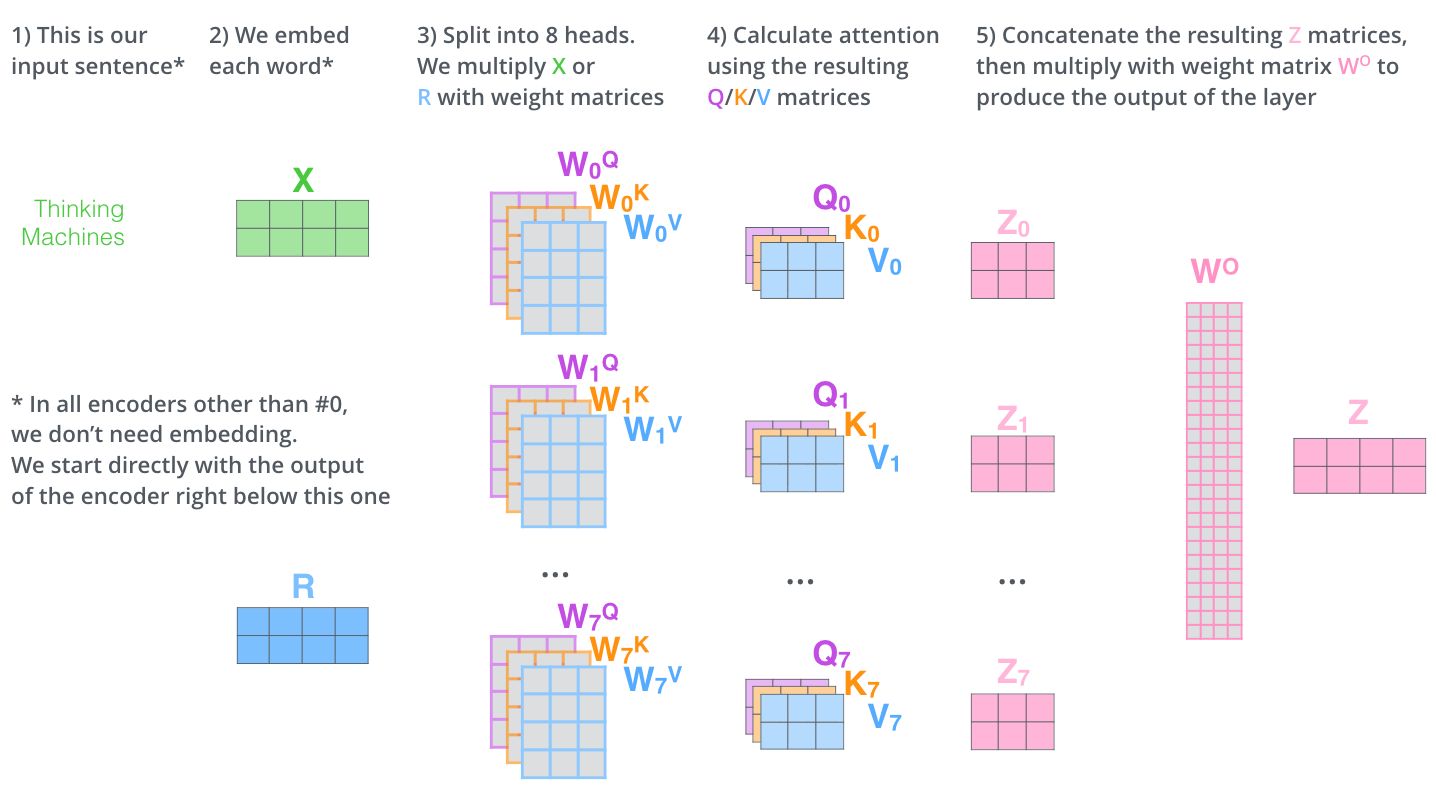
4. 模型方面
从模型上看,Attention 一般用在 CNN 和 LSTM 上,也可以直接进行纯 Attention 计算。
1)CNN+Attention
CNN 的卷积操作可以提取重要特征,我觉得这也算是 Attention 的思想,但是 CNN 的卷积感受视野是局部的,需要通过叠加多层卷积区去扩大视野。另外,Max Pooling 直接提取数值最大的特征,也像是 hard attention 的思想,直接选中某个特征。
CNN 上加 Attention 可以加在这几方面:
a. 在卷积操作前做 attention,比如 Attention-Based BCNN-1,这个任务是文本蕴含任务需要处理两段文本,同时对两段输入的序列向量进行 attention,计算出特征向量,再拼接到原始向量中,作为卷积层的输入。
b. 在卷积操作后做 attention,比如 Attention-Based BCNN-2,对两段文本的卷积层的输出做 attention,作为 pooling 层的输入。
c. 在 pooling 层做 attention,代替 max pooling。比如 Attention pooling,首先我们用 LSTM 学到一个比较好的句向量,作为 query,然后用 CNN 先学习到一个特征矩阵作为 key,再用 query 对 key 产生权重,进行 attention,得到最后的句向量。
2)LSTM+Attention
LSTM 内部有 Gate 机制,其中 input gate 选择哪些当前信息进行输入,forget gate 选择遗忘哪些过去信息,我觉得这算是一定程度的 Attention 了,而且号称可以解决长期依赖问题,实际上 LSTM 需要一步一步去捕捉序列信息,在长文本上的表现是会随着 step 增加而慢慢衰减,难以保留全部的有用信息。
LSTM 通常需要得到一个向量,再去做任务,常用方式有:
a. 直接使用最后的 hidden state(可能会损失一定的前文信息,难以表达全文)
b. 对所有 step 下的 hidden state 进行等权平均(对所有 step 一视同仁)。
c. Attention 机制,对所有 step 的 hidden state 进行加权,把注意力集中到整段文本中比较重要的 hidden state 信息。性能比前面两种要好一点,而方便可视化观察哪些 step 是重要的,但是要小心过拟合,而且也增加了计算量。
3)纯 Attention
Attention is all you need,没有用到 CNN/RNN,乍一听也是一股清流了,但是仔细一看,本质上还是一堆向量去计算 attention。本文提出了Transformer。Transformer 也可以视为一种自带Attention机制的RNN。它使用了问题、键、值三个向量,让权重的计算变得更加细致。
Transformer可以说是集近些年的研究之于大成。里面涉及到很多很多技术点,包括:
- Feed Forward Network
- ResNet的思想
- Positional Embedding 解决输入时序问题
- Layer Normalization
- Decoder中的Masked Self-Attention
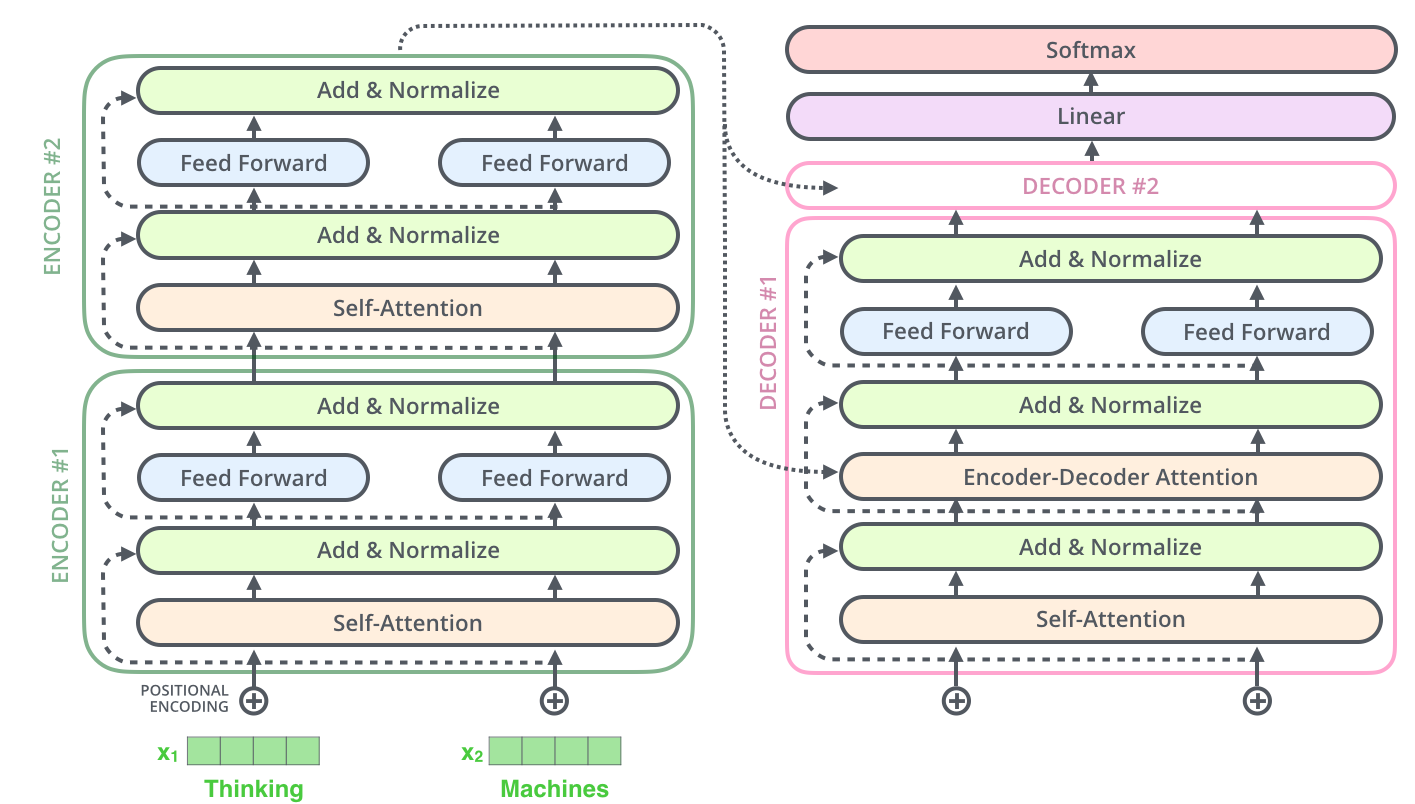
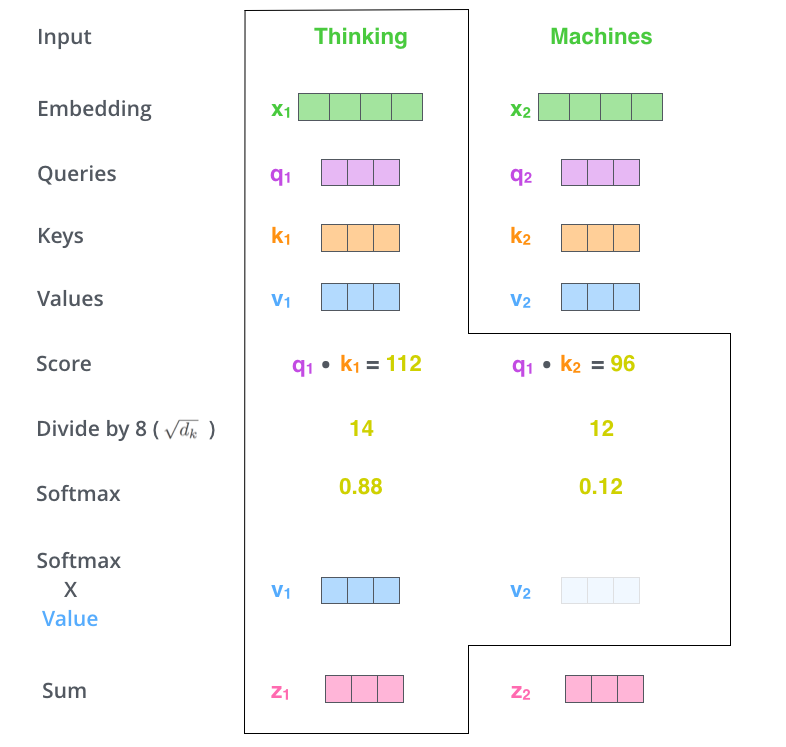
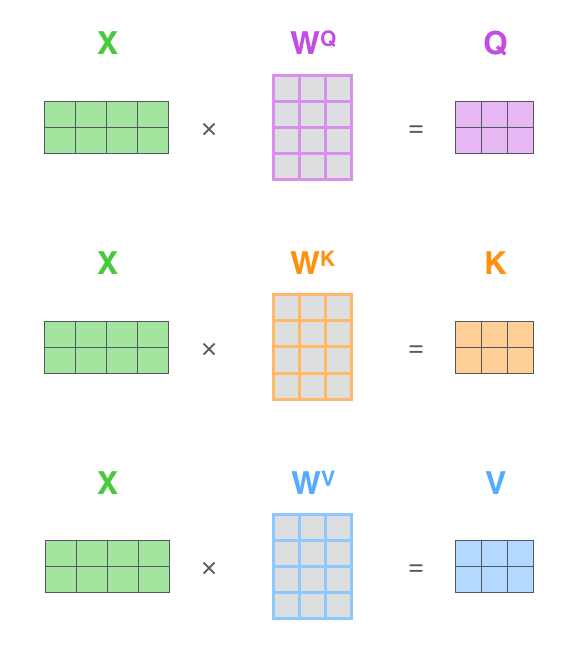
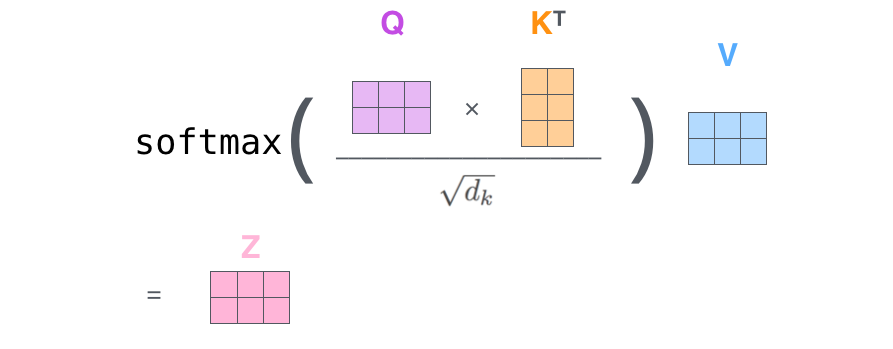
5. 相似度计算方式
在做 attention 的时候,我们需要计算 query 和某个 key 的分数(相似度),常用方法有:
1)点乘:最简单的方法,
2)矩阵相乘:
3)cos 相似度: $$s(q,k)=\frac{q^T}{||q||·||k||}$$
4)串联方式:把 q 和 k 拼接起来, $$s(q,k)=W[q;k]$$
5)用多层感知机也可以: $$s(q,k)=v^T_atanh(Wq+Uk)$$
Encoder-Decoder模型结构
以机器翻译模型为例:原文
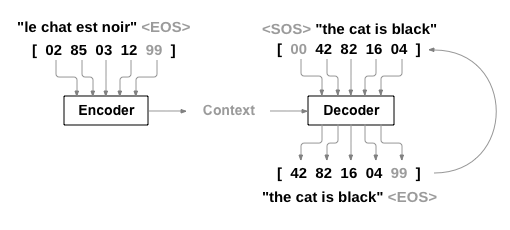
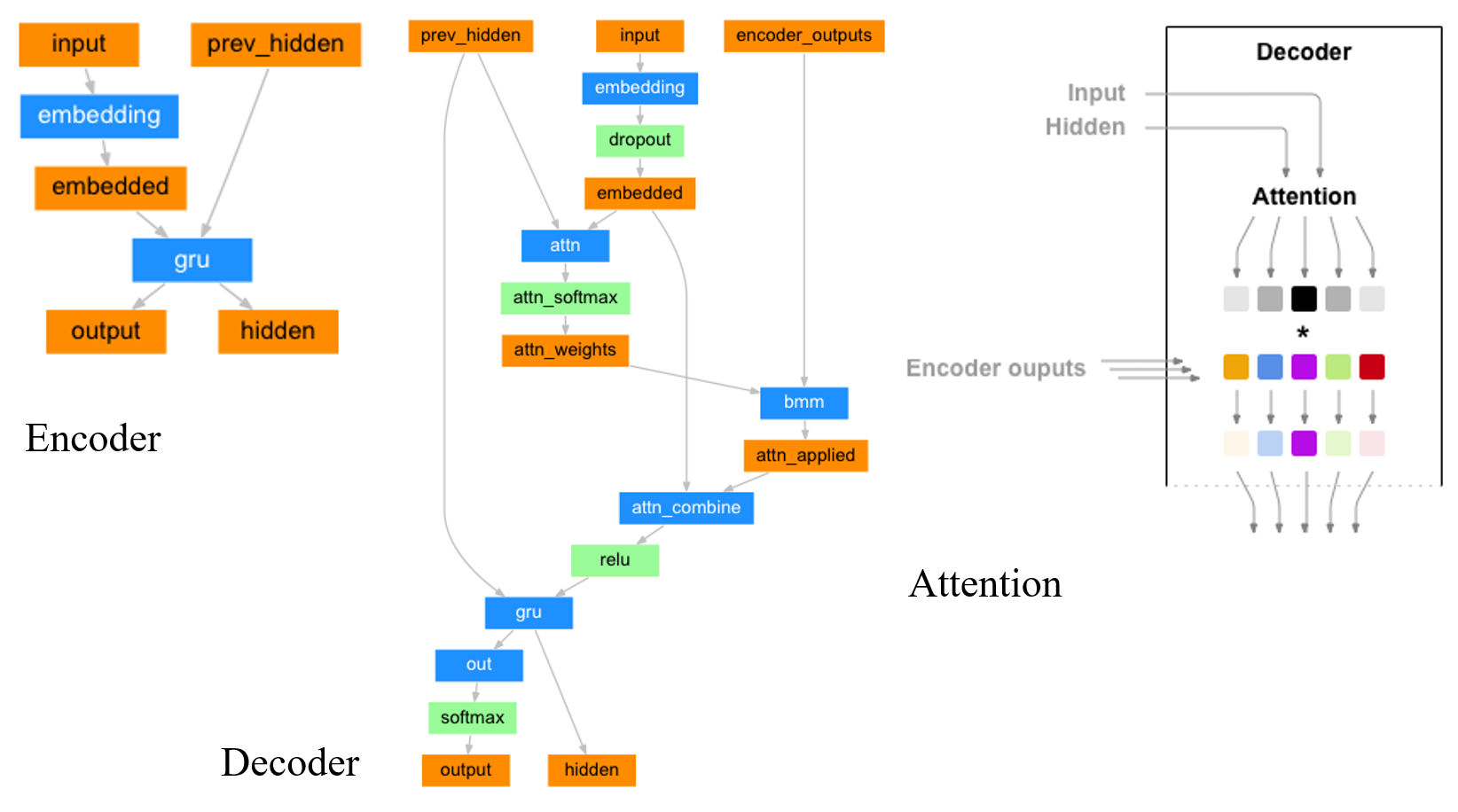
- Encoder的输入是句子中每个词对应的数字编号的序列,输出的是RNN每一个Cell的相应Output Vector(或是一次只输入一个词的编号,然后每次得到一个Output,最后拼成一个List)。其RNN的初始Hidden Layer是随机初始化(Random、全0)的。
- Decoder的第一个输入是句子起始符
,数字编码可以为0,然后Hidden Layer使用Encoder的最后一个Hidden Layer Value初始化。每次只输入一个Input数字编号,然后下一次的Input或使用上次的预测结果,或是使用Output Label的相应值。前者被称作Teacher Forcing,后者是Without Teacher Forcing。 - Attention是加在Decoder上的。Decoder 的input会先做embedding,之后么embedding和Hidden Layer参数Concate到一起,再过一个FC(过FC就相当于乘上了一个变换矩阵了)就得到了Attention。这个算出来的Attention再和Encoder的output做一个
torch.bmm矩阵乘法(),得到一个向量([]),这个数值即为该input过了Attention后的值。该值再和embedding后的值([]) 使用Concate拼到一起,过一个FC,输出一个([])的向量,它便是施加了Attention后的Input。这里本质上使用了前面提到的权值计算方法中的 串联方式。 - 简单说,decoder的input和hidden layer只是用来计算encoder各个cell的output的权重的。每个output有着hidden_size维度,他们最终按照attention作为加权求和。或是说:Decoder中每一个Cell,去Encoder中寻找最相关的记忆。
网络结构
Embedding
torch.nn.Embedding(*num_embeddings: int*, *embedding_dim: int*)
To summarize
num_embeddingsis total number of unique elements in the vocabulary, andembedding_dimis the size of each embedded vector once passed through the embedding layer. Therefore, you can have a tensor of 10+ elements, as long as each element in the tensor is in the range[0, 9], because you defined a vocabulary size of 10 elements.
即第一个数num_embedding指的是你的输入中有多少可能的值,或者说语料库的大小;第二个数embedding_dim指的是给定一个input(一个digit),输出几个digit。
BMM
torch.bmm(*input*, *mat2*, *deterministic=False*, *out=None*) → Tensor
Performs a batch matrix-matrix product of matrices stored in
inputandmat2.
inputandmat2must be 3-D tensors each containing the same number of matrices.If
inputis a tensor,mat2is a tensor,outwill be a tensor.
简单说,这个函数的作用是在不动batch维度的情况下对其他维度执行矩阵乘法。
Self-Attention 与 General Attention在实现上的区别
Self Attention 本质上是乘上一个和输入向量需要加Attention的维度等长的向量(nn.Parameter(torch.Tensor(1, D), requires_grad=True)),并做矩阵相乘。如输入是一个长为L的句子,句子中每个词的Embedding长度是D, batch为B,即(B, L, D), 那么若是要对句子的长度维度做Attention,则需要乘一个shape为(B, D, 1)的向量,得到的Output shape为(B, L, 1)。之后还需做softmax,句子长度mask,结果除以单词个数保证所有weight加起来等于一,然后再使用这个output点乘input,即可得到和input shape相同,但被加了Attention后的值。
1 | import numpy as np |
而General Attention的本质则是一个FC(即一个映射矩阵)。
1 | class EncoderRNN(nn.Module): |
Reference
- NLP FROM SCRATCH: TRANSLATION WITH A SEQUENCE TO SEQUENCE NETWORK AND ATTENTION
- Attention 机制 – EasyAI
- Attention用于NLP的一些小结
- Attention-PyTorch
- Pytorch Batch Attention Seq-2-Seq
- Attention机制详解(二)——Self-Attention与Transformer
- The Illustrated Transformer
- Visualizing A Neural Machine Translation Model (Mechanics of Seq2seq Models With Attention)
- 知乎:目前主流的attention方法都有哪些?